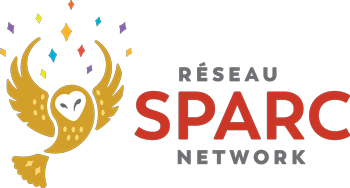Rural Arts in Peru: The Colours of History
A look into Rural Arts in Peru by Youth Blogger Jimena Yengle.
The history of Rural Arts in Peru is a chapter of cultural richness, as hidden as it is magical. Art is a treasure that connects the human being with his essence, and this is present in every social and cultural context.
Peruvian artists, who have freedom in their creative work, portray all kinds of experiences through different colours, mixtures and textures. The diversity of artistic expression is the secret ingredient, under the beauty of Remote Art.
To talk about Remote Art is to open the doors to thousands of hidden talents. It is to understand each interpretation of art, adding value and meaning. The history of a civilization is linked to its art. Such as ceramics, a sample of history and human experience. A reminder of the most remote times in history. A proof of the first creatives, who with their traces, could bear witness to life. Ayacucho is a land of ceramics, since in the town of Quinoa, the most beautiful altarpieces, churches and ceramic nativity scenes abound. Ayacucho crafts are one of the most complex expressions of Peruvian art and imagery. It is a mixture of the Spanish religious vision with the Andean worldview. It stands out for being an adaptation of the altarpieces to the reality and customs of the inhabitants.
Of course, they are not the only ones. The pottery produced by the potters and artisans of cities such as Cuzco and Cajamarca, goes beyond utility. While the crafts of Pisac, in the Sacred Valley of the Incas, show that memories leave traces in the hearts of people.
As for painting, we cannot fail to mention that it dazzles due to its magical content, commemorative pictography modalities and the use of a variety of reliefs, volumes and colors. From the paintings with portraits of Incas, ñustas (wives of the Incas) and characters of the nobility, to the vases painted in freestyle, known as "polychrome keros".
Of course, rural art is present in all regions of the Peruvian territory (coast, highlands and jungle). In the jungle, the native community of San Francisco de Yarinacocha makes paintings and fabrics with geometric figures.
While on the coast, we can find a variety of jewelry and handcrafted carvings, made by artisans from Catacaos, a territory near Piura.
Let's talk about rural art in the mountains of Peru, whose characteristics are personality and originality.
Photo by July Benda Gonazales Callapaza on Unsplash
Image Description: a person wearing a mask that has a large nose, big toothy grin and moustache.
The craft has different styles, depending on the locality, and of course the tradition is manifested in each handmade piece. Ceramics, works in wood and/or stone, jewelry, or fabrics, are products of Andean crafts whose production techniques have passed from generation to generation since pre-Hispanic times, and that today reveal the richness of Peruvian culture.
Proof of this charm is the Cuzco crafts, heir to the Inca culture. For this reason it is one of the most important crafts in the Andean region. Cusco pottery is the result of the fusion of two cultures: the Andean and the European. It is characterized by being decorated with geometric shapes, and by having a fine finish. Cuzco artisans make pitchers, the pucu (plate with a handle), the manca (pot) and the pucchuela (container). Very original names for everyday utensils! On the other hand, its textile art stands out for its tapestries and clothing, the same ones that are made with alpaca, vicuña, llama and sheep fiber (animals of the mountains), being polychrome (dyed with vegetable dyes).
Another rich contribution of the mountains is the Puno crafts. Alpaca fiber fabrics are one of the most representative examples of Puno crafts. And its ceramics stand out with the presentation of the "Toritos de Pucará", which are made by the potters and artisans of a town called Pucará. If we talk about beauty, we find representations of churches, small village chapels, and elements of the flora and fauna of Lake Titicaca. All worked in ceramics. In this place, the women weave traditional looms and the men wear sweaters and chullos (hats of many colors!), using materials native to the area such as sheep and alpaca fiber.
As for dance, music and singing, these are present in all community activities or rituals, with a joyful and enthusiastic connotation! The Incas used a wide variety of musical instruments, and many of these have remained generation after generation.
Peruvian music is dominated by the national instrument, the charango. A very peculiar instrument, as old as it is sweet. It was invented during the Viceroyalty of Peru by Spanish musicians imitating the vihuela. In the Canas and Titicaca regions, the charango is used in courtship rituals. Variants include the walaycho, chillador, chinlili, and the major and minor tuned Charangon
Photo by Persnickety Prints on Unsplash
Image Description: a group of women stand together outdoors. They are all colourfully dressed in sweaters and skirts that appear handmade.
Rural Art celebrates Peruvian culture, and represents the shock of a people with a memory of colours, and a testimony of hopes.



